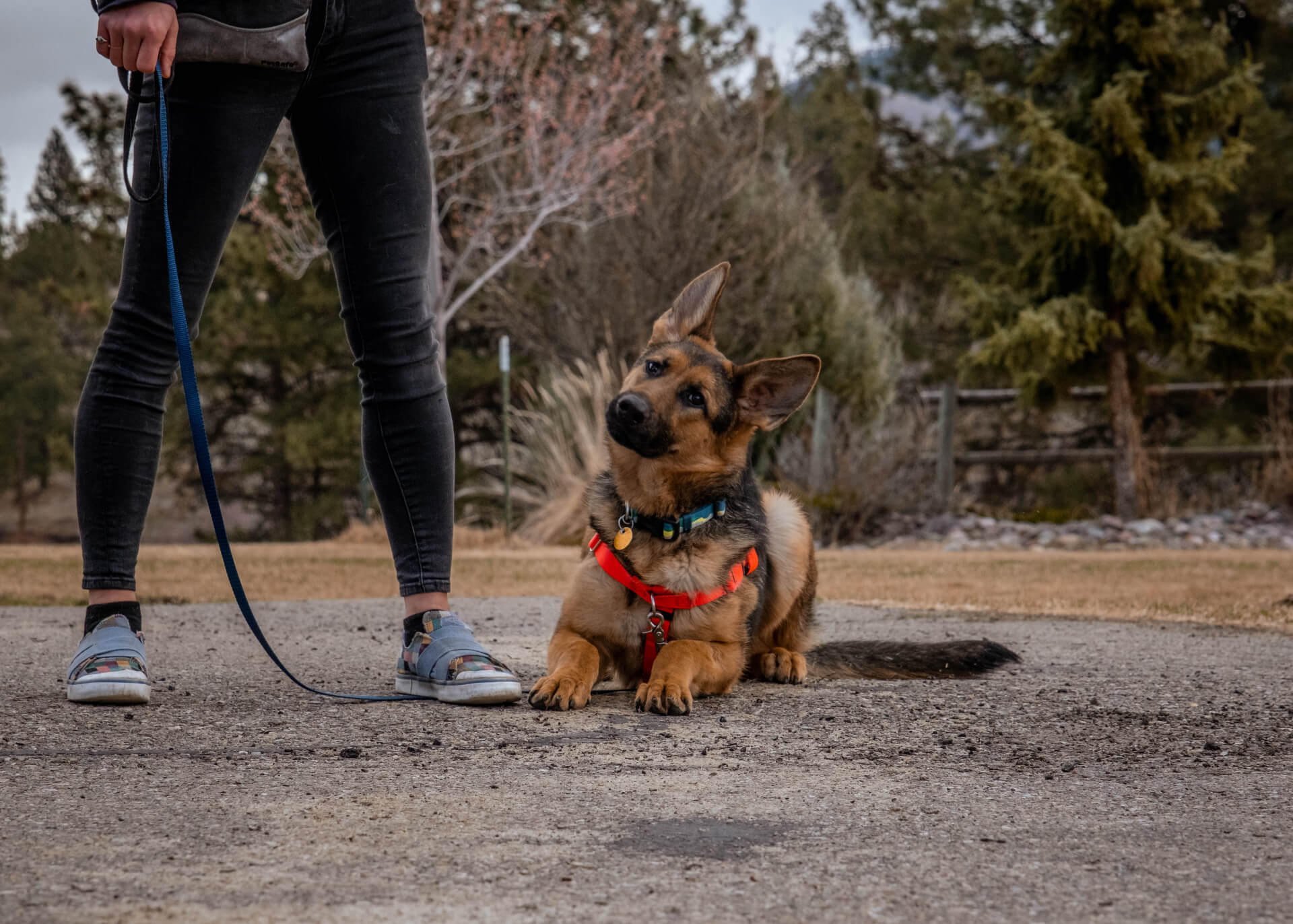
Managing Leash Aggression and Reactivity
Reactivity is defined as an over-reaction to an external stimulus often called a ‘trigger’. Dogs can be reactive to people, dogs, other animals or inanimate objects and they may bark, lunge, or growl at the trigger. Reactivity is usually rooted in fear, insecurity, or frustration even though it may look as if your dog is seeking out an altercation. It is important to manage your dog’s environment to prevent the reactive behavior so that it does not become further established. With training, patience, and management, reactive dogs can improve. The following suggestions will help you help your dog.
- Manage all interactions with the public. Avoid exposing your dog to triggers when you aren’t training. Avoid leaving your dog unattended outside in your yard or car. When guests are in your home, separate your dog from them by putting her in another room or a crate. Be an advocate for your dog by explaining her needs to strangers and visitors.
- Use physical barriers (leashes, crates, baby gates, basket muzzles, etc.) to prevent access to triggers. Keep your dog on leash when walking in public places. Use a long-line (15-20 foot leash) to give her more freedom to explore. Walk your dog on either a harness or a head halter instead of a collar. Tension and stress increases when your dog pulls on her leash and collar resulting in a more reactive dog. The Humane Society sells humane walking tools in the re-Tail store. If your dog has ever bitten and injured a person or animal consider teaching her to wear a basket muzzle. In your home use the leash, doors, crate, baby gates, etc. to control your dog’s movements and keep everyone safe.
- Be selective about where you take your dog. Carefully select where and when you walk your dog based on traffic, whether strange dogs will be on-leash or off, and how much visibility and maneuverability you have to avoid potential triggers. For example, avoid narrow trails where you would be trapped if you came across a dog or person and avoid walking in neighborhoods where there are lots of dogs behind fences barking at your dog. If your dog has bitten and injured a human or other animal consider having a professional work with you in your home before taking her out in public.
- Always carry high-value treats. Regular, crunchy dog treats are usually not valuable enough to hold a dog’s attention outside of the home. Pea-sized pieces of deli meats, cheeses, and smelly soft treats are much more motivating for most dogs. Use these treats to reward your dog for responding to her name, sit, down, and other skills while on walks. Also, use these treats to distract your dog if you come across a possible trigger. You can play distraction games such as ‘find it’ (scatter treats on the ground), feed her many treats in a row, or use the treats as a lure to lead her away and prevent her from focusing on the trigger.
- Be very aware of your surroundings. The instant you notice a potential trigger determine how to change your path so that you can maintain as much distance as possible between your dog and the trigger. Distance makes it easier for a dog to tolerate a trigger. Ask your dog to focus on you as you calmly lead her away from the trigger. Use a happy voice and bouncy movements to show your dog that there is nothing to worry about. Be proactive and ask your dog to focus on you and/or move in a distance-creating direction the instant she sees a potential trigger as opposed to waiting until she fixates on or reacts to that trigger.
- Practice the 4 Rs (Retreat, Reorient, Respire, and Reward) if your dog has a reactive episode. Retreat far enough from the trigger that your dog stops reacting. Encourage her to Reorient to you using her name/noises or a food lure. If she cannot focus on you, retreat further. Respire together – taking deep breathes will encourage your dog (and yourself) to calm down. Use treats and praise to Reward calm behavior, attention to you and/or skills such as ‘sit’ or ‘touch’.
- Avoid punishing your dog in any way for reactive behavior. Avoid pinning her, scolding her, yanking her leash, or picking her up when she is reacting. Punishment adds tension to an already tense moment. She is likely to associate the punishment with you or the trigger instead of her behavior, making her reactivity worse. You also risk her re-directing her aggression or becoming defensively aggressive towards you.
- Work with a professional trainer experienced in using reward-based training. While management is the first step to resolve reactivity, training can make it easier to manage your dog and teach her to be more comfortable around triggers. The Humane Society of Western Montana offers private lessons and has two Certified Professional Dog Trainers experienced in this type of behavior modification training.
- Maintain your dog’s vaccinations and follow all local laws regarding bites. In Missoula County any bite that breaks the skin needs to be reported to Missoula Animal Control at (406)541-7387. In other counties contact the local law enforcement to determine the appropriate steps to take following a bite. Keep your dog up-to-date on her vaccinations and maintain accurate records of the same.
